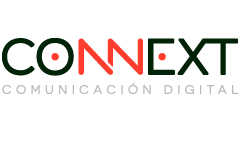 Digital Asset Management, which is normally referred to as DAM, is software responsible for organizing creative as well as visual resources of a company. In this age of digitalized technology and communication, businesses can acquire a lot of media assets. With the advent of time and as the businesses keep expanding, the number of assets will keep increasing.
Digital Asset Management, which is normally referred to as DAM, is software responsible for organizing creative as well as visual resources of a company. In this age of digitalized technology and communication, businesses can acquire a lot of media assets. With the advent of time and as the businesses keep expanding, the number of assets will keep increasing.
As the need to create, ingest, edit, manage and distribute assets continue to expand so it is quite possible you will soon find problems in managing and organizing the pure amount of different sets of data in your command. This is where you need an effective solution or service to handle all these different assets. DAM allows media assets to become more organized, easier to create and edit and helps marketing management teams find the right things in the right places.
Who needs DAM?
Now, the big question is who needs a Digital Asset Management system? All kinds of firms have potential requirements for such a service. If you are keen to start an online based business, or your business is heavily dependant on online transactions, or if you spend time and money managing a business, a DAM is definitely important for you.
Also for startup companies or small-scale businesses, this tool can be a game changer. It provides better management of visual data so that better use of the resources can take place. Also if your company has a considerable volume of digital materials and wants to centralize them and provide a consistent imagery across all its channels and geographic networks, you may very well appreciate these kinds of systems.
Also Read: 5 Pinterest Hacks That Can Be Used For B2B Marketing
In the following section, we will focus mainly on digital asset management systems through various applications and characteristics.
Digital Asset Management Tools:
Protecting a company’s creative assets is one of the most important security aspects these days. Various advanced and seamless digital asset management tools or software are mentioned below. The list of tools will also help small businesses.
Libris
Libris is more than 2 years old data management tool. This has been considered as the easiest to use and simple to access digital asset management software. Implementation of this tool to an enterprise is quick and easy and that makes the tool quite popular among small-scale businesses. It has no maintenance cost either. It handles all types of media assets including audio, video, and graphics.
Bynder
Many businesses may lose a crucial amount of time trying to find assets at a time when they are required. With Bynder, such worries can be overcome. It gives a centralized access to all media assets and can save up to 70% of your marketing time for your business while searching for, managing, and distributing media. Flexible pricing of the software is a major highlight.
Cumulus
Cumulus is another robust tool. This software actually aims at collaborating with various teams or departments of a business. Specifically, it integrates the teams with access to digital assets through one system. It also gives access to third parties, like suppliers and distributors. As a result, a holistic digital asset management approach takes place with this tool.
Webdam
Webdam, which is one of the leading marketing asset management systems, is a scalable software. From small to large enterprises, and even non-profitable organizations can use this software for the purpose of creating and managing assets. It is user-friendly, simple to use and helps in managing resources like logos, digital posters, advertisement materials, website banner, social media profile pictures and other visual assets of a company.
Brandfolder
Brandfolder is a tool which actually aims in segregating the media assets in a systematic order. As a result, resources, as well as data assets, can be viewed according to the segmentation. The ultimate aim of using Brandfolder is to guarantee good organization of resources.
Sales Layer
A DAM is, without a doubt, a powerful tool to make the organization of any media resources easier in your company, but it will be insufficient for the management and updating of the product content. Under this premise, tools that go beyond a DAM have been introduced to the market, such as Sales Layer, which offers a PIM with DAM functions. If you need to work with product data (SKU, descriptions, labels …) and product materials, this software is your best ally. With Sales Layer, you will obtain the maximum quality in the information of your product, at the same time you will be able to organize and edit all your visual materials and multimedia resources.
Also Read: DAM Through the Ages – What’s Next?
Tips for Choosing the Most Appropriate DAM
In order to choose the most appropriate data asset management application or tool, business owners or managers can use the following tips or tricks.
- Some robust digital asset management tools offer onsite cloud-based systems. Having a cloud-based system will help in ensuring better data management. In addition, cloud storage offers higher physical as well as virtual safety to data.
- Security and controlled access should be the most highlighted part of your digital asset management system.
- A perfect digital asset management system or application should bridge the connection between various business departments so that data can be collected from various sources.
- Binary systems and metadata storage are the most important aspects of the business data management process.
- Use and relationship reports between different versions of a file are mandatory.
- It must include the option to make workflows and integrate API connections.
When these things are taken into consideration, the chances of finding or selecting a robust as well as an agile DAM software become higher.
At last, you must remember that a Digital Asset Management handles visual and creative corporate and marketing content, but does not manage product information.
Apart from all these things, a business has to understand its unique needs for a digital asset management system. Choosing a tool or system that perfectly fits your business needs will be the best thing for your company.
Recommended Read: OK Google: Why Your Brand Needs to Talk?





















